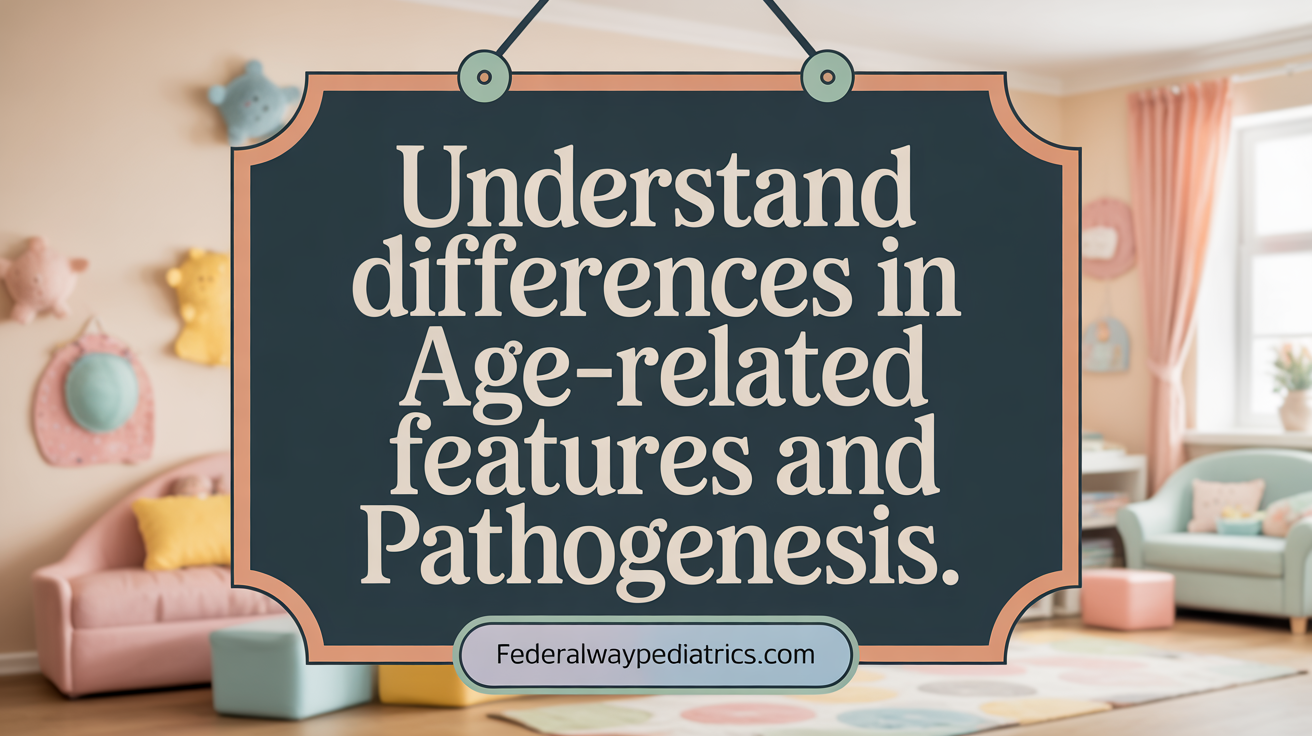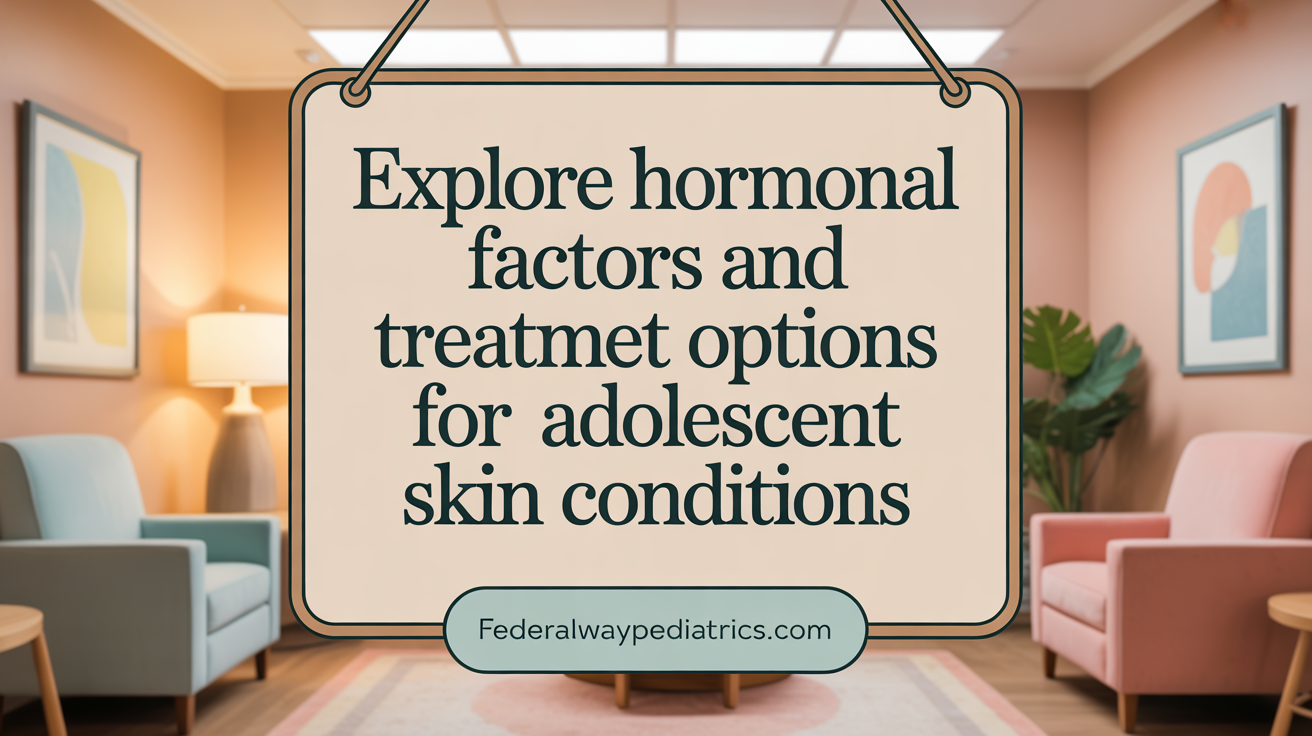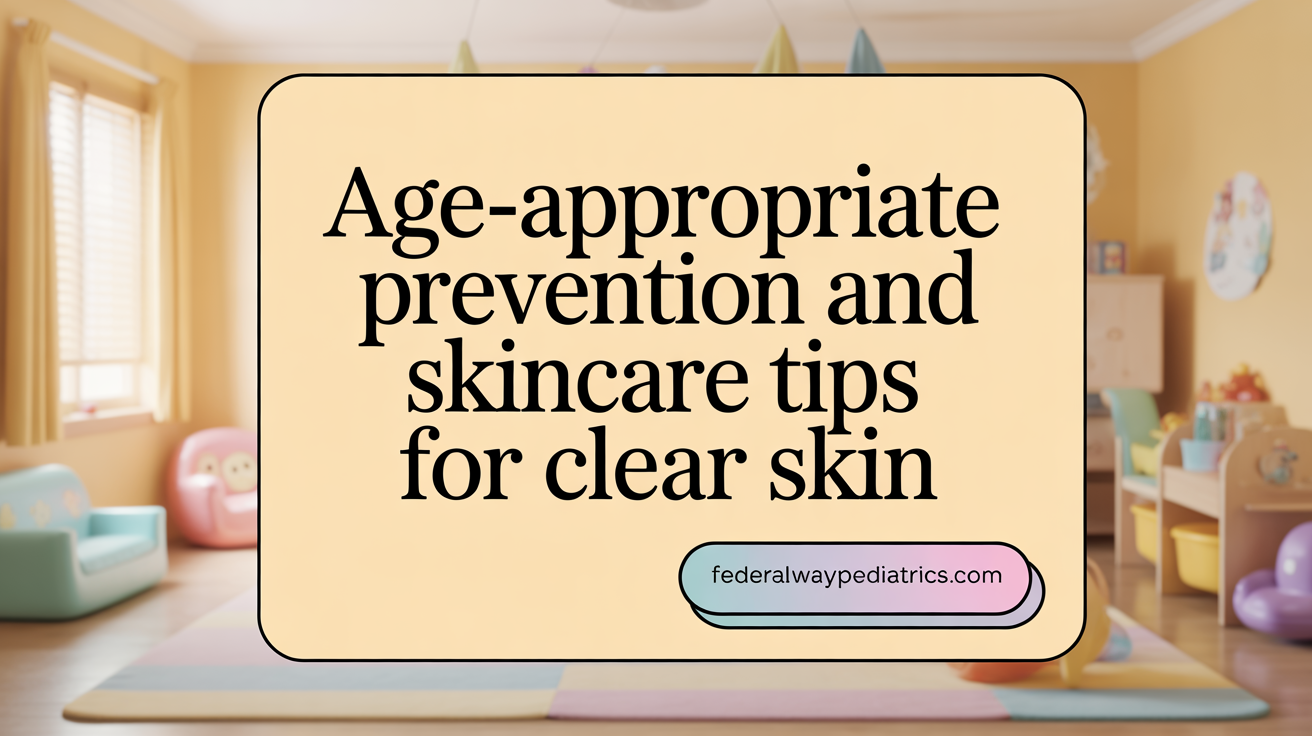Introduction to Acne Across Ages
Acne is a common skin condition that affects individuals at different stages of life, notably during childhood and adolescence. While often seen as a normal part of puberty, acne manifests differently depending on the age group, with distinct causes, presentations, and treatment needs. This article explores the epidemiology, clinical features, and pathogenesis of teenage versus childhood acne, highlighting variations in causes and risk factors. It also outlines tailored prevention, care, and management strategies suited to each age group, enriched by scientific insights into microbiological and hormonal influences. Understanding these differences is essential for effective intervention and improved outcomes.
Key Facts on Childhood and Teenage Acne
- Childhood acne typically affects children aged 7-12 years, often presenting with comedonal lesions on the T-zone.
- In childhood acne, less cystic but persistent, it may indicate underlying hormonal or health issues.
- Teenage acne is predominantly driven by hormonal fluctuations, especially androgen surges during puberty.
- Risk factors for teenage acne include genetics, diet, stress, and use of pore-clogging cosmetics, affecting lesion severity.
- Different acne lesions include comedones, papules, pustules, nodules, and cysts, with severity guiding treatment choices.
- Treatment differs; teenagers often receive topical and systemic therapies, while children's acne emphasizes gentle skincare.
- Prevention strategies involve mild cleansers, avoiding irritants, balanced diet, and sun protection, tailored by age.
- Key microbiology involves C. acnes, with strains and resistance patterns affecting treatment effectiveness.
- Hormonal influences include androgens stimulating sebum production, particularly during puberty and hormonal imbalances like PCOS.
- Understanding these differences optimizes diagnosis and management, ensuring effective, age-appropriate care for acne patients.
1. Childhood Acne: Early Signs and Considerations

What are the differences in epidemiology, clinical features, and pathogenesis of teenage versus childhood acne?
Childhood acne typically appears earlier than teenage acne, primarily affecting children aged 7 to 12 years. Although less common than teenage acne, it can sometimes be more inflammatory and complex. The prevalence varies geographically and by gender, with some studies indicating a higher incidence in females within this age group.
Clinically, childhood acne is characterized mostly by comedonal lesions—whiteheads and blackheads—predominantly localized on the T-zone of the face, including the forehead, nose, and chin. A significant number of cases also involve the back and chest, which can affect physical activity and self-esteem. Unlike adolescent acne, severe nodulocystic types are less frequently observed in children, but inflammatory papules and pustules can still be prominent.
The pathogenesis of childhood acne shares similarities with teenage acne, involving follicular hyperkeratinization, increased sebum production, and microbial colonization by Cutibacterium acnes. However, the strains of C. acnes involved may differ, and resistance patterns could be evolving, warranting further microbiological studies.
Genetic predisposition plays a considerable role, with children whose parents had acne being more likely to develop it. Environmental factors such as cosmetics, hygiene products, stress, and dietary influences can contribute more prominently in this age group.
In terms of severity, childhood acne tends to be less cystic but can be persistent and sometimes resistant to standard treatments. The presence of acne in this age can also serve as an indicator of underlying hormonal imbalance or other health issues, necessitating careful evaluation.
Early recognition and treatment are important not only for improving aesthetic appearance but also for preventing potential scarring and addressing any underlying health concerns. Proper management involves gentle skincare, avoidance of pore-clogging products, and, if needed, topical or systemic medications tailored to the child's age and severity of lesions.
Understanding these differences helps clinicians adopt appropriate diagnostic and therapeutic strategies, ensuring effective management tailored to young patients.
Additional insights
| Aspect | Teenage Acne | Childhood Acne | Key Differences and Similarities |
|---|---|---|---|
| Age Range | 10-19 years | 7-12 years | Childhood occurs earlier, often with less severe cystic forms |
| Clinical Presentation | Often involves comedones, cysts, severe forms like nodulocystic | Usually comedones and inflammatory lesions, less cystic | Different prevalence and severity, but similar in pathogenesis |
| Microbial Factors | C. acnes with specific strains, some resistance patterns | Similar microbes, possible different strains | Both involve bacterial colonization but with potential variation |
| Etiology and Risk Factors | Hormones, genetics, lifestyle | Genetics, environmental factors, hormones | Overlap in hormonal and genetic influences, but environmental factors might be more prominent in children |
| Treatment Approach | Topical retinoids, antibiotics, hormonal therapy, systemic medications | Gentle skincare, topical treatments, cautious systemic therapy | Slight differences in treatment protocols, considering age and developmental stage |
This overview underscores that childhood acne, while sharing common features with adolescent acne, requires specific attention due to its early onset and distinct clinical features. Proper diagnosis and management are essential for preventing long-term skin and psychological effects.
2. Teenage Acne: Hormonal Changes and Management Strategies

What variations exist in the causes, types, and risk factors for teenage and childhood acne?
Teenage acne is most often linked to hormonal fluctuations during puberty. As adolescents experience surges in androgens—male sex hormones present in both genders—sebaceous glands in the skin become overactive, producing excess sebum. This increased oil creates ideal conditions for clogged pores and bacterial proliferation, leading to common lesions like whiteheads, blackheads, papules, pustules, and more severe cystic lesions.
In children under ten, acne is less common but can be caused by early hormonal changes, genetic predisposition, or other underlying health issues. Childhood acne, including prepubertal acne, often manifests differently and may require special attention for underlying causes.
Risk factors for teenage acne extend beyond hormonal changes. Genetics play a significant role; if parents had acne, their children are more likely to experience it. Lifestyle factors such as a diet high in sugar, dairy, and processed foods can exacerbate the condition. Stress, poor sleep, and the use of heavy, pore-clogging cosmetics are also contributing factors.
The distribution of acne lesions varies with age. Teenagers typically develop acne on the face, chest, and back. Males tend to have more severe and widespread forms, especially nodulocystic acne, while females are more prone to hormonal influences such as premenstrual flare-ups.
Overall, teenage acne is a multifactorial condition influenced by hormonal surges and lifestyle factors, and it presents in various forms ranging from mild comedonal to severe inflammatory and cystic lesions.
Differentiating Acne Lesions for Effective Treatment

How can one differentiate among different types of acne lesions?
Acne lesions are primarily classified based on their appearance and level of inflammation. Recognizing these differences is crucial for selecting the most effective treatment.
Non-inflammatory acne includes whiteheads and blackheads, also known as comedones. Whiteheads are small, flesh-colored bumps that form when a pore is clogged with sebaceous material and dead skin, remaining closed at the skin's surface. Blackheads are similarly clogged pores but are open, exposing the debris to air, which causes oxidation and a characteristic dark color.
Inflammatory lesions include papules and pustules. Papules are small, red, tender bumps without visible pus, signaling inflammation around clogged pores. Pustules are similar but contain pus in the center, often appearing as red, pus-filled spots surrounded by inflammation.
At the more severe end of the spectrum are nodules and cysts. Nodules are large, firm, painful lumps that develop deep within the skin, often resulting from the rupture of clogged pore contents into surrounding tissues. Cysts are even larger, soft or semi-solid, pus-filled lesions that tend to be painful and carry a high risk of scarring.
Correctly identifying the type of acne lesion directly influences treatment choices. Mild cases with mainly comedones may be managed with over-the-counter topical agents, while inflammatory lesions might require prescription medications such as topical retinoids or antibiotics. Severe nodulocystic acne often necessitates systemic treatments like oral antibiotics or isotretinoin to reduce inflammation and prevent scarring.
Tailored Treatment and Management for Teenage and Childhood Acne
What distinct treatment approaches and management strategies are recommended for teenage versus childhood acne?
Treating acne in teenagers requires a comprehensive approach that often combines topical and systemic therapies. Topical treatments such as retinoids, benzoyl peroxide, and antibiotics are usually prescribed to reduce inflammation, clear clogged pores, and control bacterial growth. For females with moderate to severe acne, hormonal therapies like oral contraceptives or anti-androgens such as spironolactone are particularly effective, addressing hormonal influences that are prominent during adolescence.
In contrast, childhood acne, which occurs in children under 12 years, is typically milder and demands cautious management to minimize side effects. Initial treatment often hinges on gentle topical agents like low-concentration benzoyl peroxide or mild retinoids. Systemic medications are reserved for severe cases and must be administered under specialist supervision to prevent adverse effects. The overall goal is to control the lesions while avoiding unnecessary medication exposure.
Prevention is equally important across ages. This includes maintaining a gentle skin care routine—using non-comedogenic, fragrance-free cleansers—and avoiding pore-clogging products. Lifestyle factors such as a balanced diet, stress reduction, and proper hygiene can decrease the likelihood of flare-ups.
Both age groups benefit from early intervention to prevent scarring, with management plans tailored to the individual's age, severity, and skin sensitivity. Regular follow-up ensures adjustments that optimize outcomes and help combat the psychological impacts of acne, such as low self-esteem and anxiety.
Prevention and Care Specific to Age Groups

What prevention and care considerations are specific to acne in childhood and teenage years?
Prevention and treatment strategies for acne in children and teenagers focus on gentle skin care and lifestyle management. Using mild, non-comedogenic cleansers twice daily helps keep the skin clean without causing irritation. It is important to avoid harsh scrubs or pore-clogging cosmetics that can worsen acne.
Managing hormonal fluctuations through lifestyle choices can also support skin health. Maintaining a balanced diet rich in fruits, vegetables, and low in processed foods and sugars may help reduce flare-ups. Proper hydration, enough sleep, and stress reduction are vital in keeping skin balanced.
Patients should be advised not to squeeze or pick at pimples, as this can lead to infections and scarring. Sun protection is crucial because some acne treatments increase photosensitivity, making skin more vulnerable to UV damage.
Early education about acne and consistent skincare routines can prevent the development of scars and improve psychological well-being. Tailoring prevention efforts to age-specific needs ensures that young patients can manage their skin effectively, minimizing the long-term effects of acne.
Microbiological and Hormonal Insights into Acne Across Ages
What are the scientific insights into microbiology and hormonal influences affecting acne at different ages?
Acne development is closely linked to both microbial activity and hormonal regulation. A central microbiological factor involves Cutibacterium acnes (formerly Propionibacterium acnes), a bacterium that resides naturally within hair follicles. During acne formation, C. acnes proliferates excessively, releasing enzymes and inflammatory mediators that provoke skin inflammation and lesion formation. Studies reveal a high prevalence of C. acnes phylotype IA1 (CC18 subgroup), especially in resistant strains that show resistance to antibiotics like macrolides, affecting treatment success.
Hormonal influences are equally critical. Androgens, male sex hormones present in both sexes, stimulate the sebaceous glands to produce more sebum. Elevated sebum levels contribute to clogged pores and provide a breeding ground for bacteria. During puberty, the surge in androgens causes increased sebum, leading to adolescent acne. Similarly, in adult women, hormonal fluctuations during menstrual cycles, pregnancy, or conditions like polycystic ovary syndrome (PCOS) can exacerbate acne.
In adults, serum androgen levels are often within normal ranges, yet acne persists or develops, indicating tissue sensitivity or intracrine metabolism—where hormones are produced and act locally within skin tissues—may play a significant role. This heightened tissue responsiveness makes even normal hormonal levels sufficient to cause acne.
Environmental factors also influence acne's microbiological and hormonal aspects. Stress can elevate endogenous cortisol and other hormones, worsening acne. Diets high in glycemic load and dairy intake may modify hormone levels and skin sebum. The use of cosmetics or external agents that clog pores can also interact with microbial activity, worsening skin inflammation.
Understanding these complex interactions aids in tailoring treatments. Addressing bacterial resistance patterns with appropriate antibiotics and managing hormonal influences with agents like hormonal therapy or lifestyle modifications can significantly improve patient outcomes.
Key Takeaways on Addressing Acne from Childhood to Teenage Years
Acne affects individuals differently from childhood through adolescence due to evolving hormonal, microbial, and environmental influences. Childhood acne, though less common, requires careful clinical evaluation and milder management strategies, focusing on safety and early intervention. Teenage acne is primarily driven by puberty-induced hormonal surges, demanding comprehensive and sometimes more aggressive treatments tailored to lesion type and severity. Understanding the distinct presentations and causes in these age groups enables more effective prevention, reduces the risk of scarring, and alleviates the emotional burden acne can impose. Scientific insights into microbiology and hormonal sensitivities underscore the necessity of personalized care approaches. With awareness and appropriate management, acne can be controlled effectively at any age, fostering healthier skin and improved quality of life.
References
- Adult acne versus adolescent acne: a narrative review with a focus ...
- Acne in Children | Johns Hopkins Medicine
- Understanding Acne in Teenagers and Kids: Causes, Treatment ...
- Learn All You Need to Know about Acne in Children
- Prepubertal acne: A retrospective study - PMC
- Adult acne versus adolescent acne: a narrative review with a focus ...
- [PDF] Acne Information - Society for Pediatric Dermatology
- Bye bye breakouts: Understanding teenage acne
